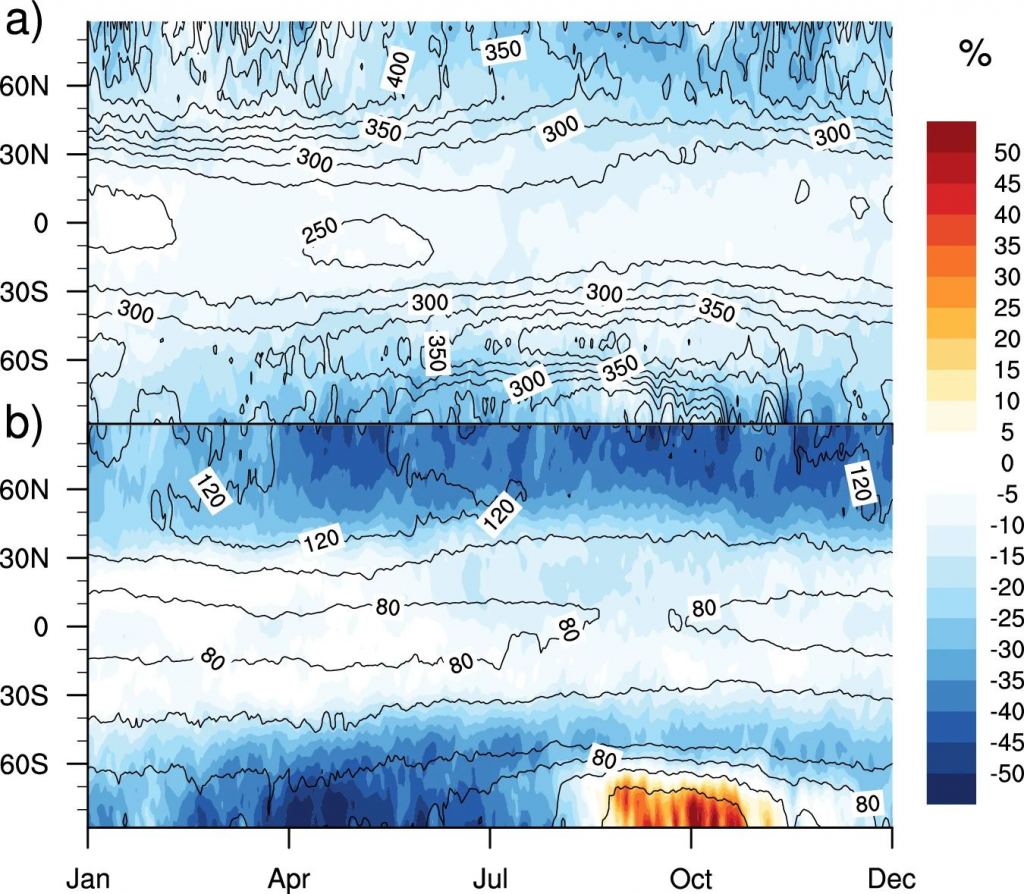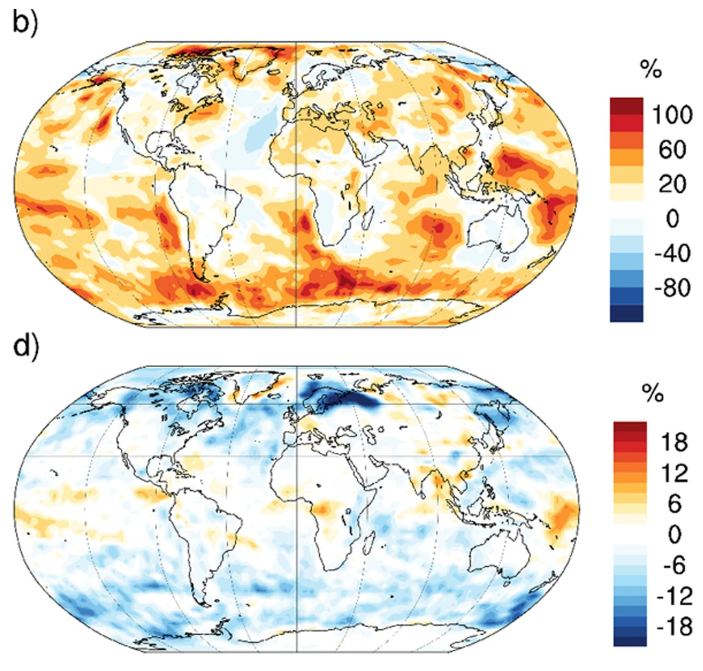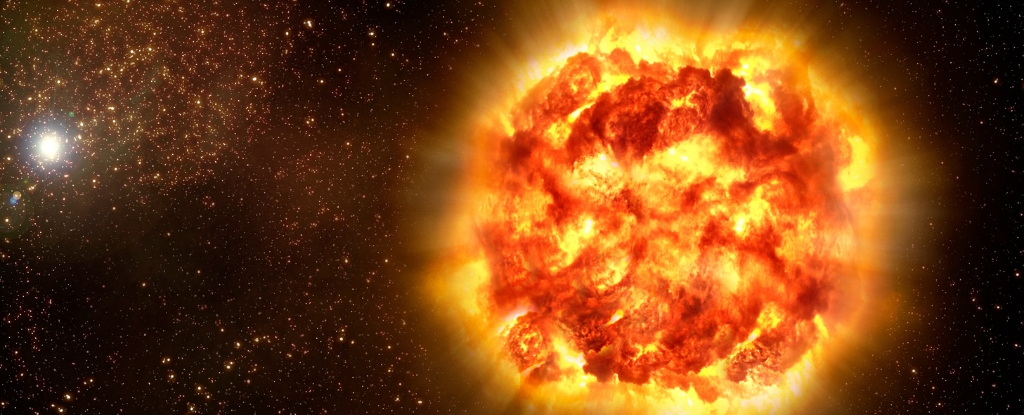Earth’s protective atmosphere has sheltered life for billions of years, creating a haven where evolution has produced complex life forms like us.
The ozone layer plays a crucial role in protecting the biosphere from deadly UV radiation. It blocks 99% of the sun’s powerful UV rays. Earth’s magnetosphere also protects us.
But the sun is relatively tame. How effective are the ozone and magnetosphere in protecting us from powerful supernova explosions?
Every million years – a small fraction of Earth’s 4.5 billion year lifespan – a massive star explodes within 100 parsecs (326 light years) of Earth. We know this because our solar system is in a huge bubble in space, called a local bubble.
It is a cavernous region of space where the hydrogen density is much lower than outside the bubble. A series of supernova explosions over the past 10 to 20 million years eradicated the bubble.
Supernovae are dangerous, and the closer a planet is to one, the more deadly their effects are. Scientists have speculated about the effects supernova explosions have had on Earth, wondering whether they triggered mass extinctions or at least partial extinctions.
The gamma-ray burst and cosmic rays from a supernova can deplete Earth’s ozone layer, allowing ionizing UV radiation to reach the Earth’s surface. The effects could also lead to more aerosol particles in the atmosphere, increasing cloud cover and causing global cooling.
A new research article in Nature communication Earth and environment investigates supernova explosions and their effect on Earth. It is titled “Earth’s atmosphere protects the biosphere from nearby supernovae.”
The lead author is Theodoros Christoudias from the Climate and Atmosphere Research Center, Cyprus Institute, Nicosia, Cyprus.
The Local Bubble isn’t the only evidence of nearby core-collapse supernovae (SNe) over the past few million years. Ocean sediments also contain 60Fe, a radioactive isotope of iron with a half-life of 2.6 million years.
SNe expel 60Fe into space when they explode, indicating that a nearby supernova exploded about 2 million years ago. There is also 60Fe in sediments indicating a new SN explosion about 8 million years ago.
Researchers have linked an SN explosion to the Late Devonian extinction event, about 370 million years ago. In one paper, researchers found plant spores burned by UV light, an indication that something powerful has depleted Earth’s ozone layer.
In fact, Earth’s biodiversity declined about 300,000 years before the Late Devonian extinction, suggesting that multiple SNe may have played a role.
The Earth’s ozone layer is constantly changing. When UV energy reaches it, it breaks apart ozone molecules (O3). This dissipates the UV energy and the oxygen atoms combine back into O3. The cycle repeats.
That’s a simplified version of the atmospheric chemistry involved, but it serves to illustrate the cycle. A nearby supernova could overwhelm the cycle, reducing the ozone column density and allowing more deadly UV radiation to reach the Earth’s surface.
But in the new paper, Christoudias and his fellow authors suggest that Earth’s ozone layer is much more resilient than thought, providing sufficient protection against SNe within 100 parsecs.
While previous researchers have modeled Earth’s atmosphere and its response to a nearby SN, the authors say they have improved on that work.
They modeled Earth’s atmosphere with an Earth Systems Model with Atmospheric Chemistry (EMAC) model to study the impact of nearby SNe explosions on Earth’s atmosphere.
Using EMAC, the authors say they have modeled “the complex atmospheric circulation dynamics, chemistry, and process feedbacks” of Earth’s atmosphere.
These are needed to “simulate stratospheric ozone loss in response to increased ionization, leading to ion-induced nucleation and particle growth into CCN” (cloud condensation nuclei).
“We assume a representative nearby SN with GCR (galactic cosmic ray) ionization rates in the atmosphere that are 100 times current levels,” they write. That corresponds to a supernova explosion about 100 parsecs or 326 light years away.

“The maximum ozone depletion over the poles is less than that of the current anthropogenic ozone hole over Antarctica, which amounts to an ozone column loss of 60-70%,” the authors explain.
“On the other hand, there is an increase in ozone in the troposphere, but it remains well within the levels resulting from recent anthropogenic pollution.”
But let’s cut to the chase. We want to know whether the Earth’s biosphere is safe or not.
The maximum average stratospheric ozone depletion due to 100 times more ionizing radiation than normal, representative of a nearby SN, is approximately 10% worldwide. That is about the same decrease as our anthropogenic pollution causes. It wouldn’t affect the biosphere much.
“Although significant, it is unlikely that such changes in the ozone layer would have a major impact on the biosphere, especially since most of the ozone loss occurs at high latitudes,” the authors explain.
But that’s for the modern Earth. During the pre-Cambrian period, before life exploded into a multiplication of forms, the atmosphere contained only about 2% oxygen. How would an SN affect this?
“We simulated an atmosphere of 2% oxygen because this would likely represent conditions in which the nascent terrestrial biosphere would still be particularly sensitive to ozone depletion,” the authors write.
“Ozone loss is about 10-25% at mid-latitudes and an order of magnitude lower in the tropics,” the authors write. At minimal ozone levels at the poles, ionizing radiation from an SN could eventually expand the ozone column.
“We conclude that these changes in atmospheric ozone are unlikely to have had a major impact on the emerging land biosphere during the Cambrian,” they conclude.
What about global cooling?
Global cooling would increase, but not to a dangerous extent. Over the Pacific and Southern oceans the CCN could increase by as much as 100%, which seems like a lot. “These changes, while climatologically relevant, are comparable to the contrast between the pristine pre-industrial atmosphere and the polluted atmosphere of today.”
They say it would cool the atmosphere about as much as we heat it now.

The researchers point out that their research concerns the entire biosphere, and not individuals. “Our study does not take into account the direct health risks to humans and animals due to exposure to increased ionizing radiation,” they write.
Depending on individual circumstances, individuals may be exposed to dangerous levels of radiation over time. But overall, the biosphere would continue despite a hundredfold increase in UV radiation. Our atmosphere and magnetosphere can handle it.
“Overall, we find that nearby SNe is unlikely to have caused mass extinctions on Earth,” the authors write.
“We conclude that our planet’s atmosphere and geomagnetic field effectively protect the biosphere from the effects of the nearby SNe, which has allowed life to develop on land over the past hundreds of million years.”
This study shows that Earth’s biosphere will not suffer much as long as supernova explosions remain at bay.
This article was originally published by Universe Today. Read the original article.
